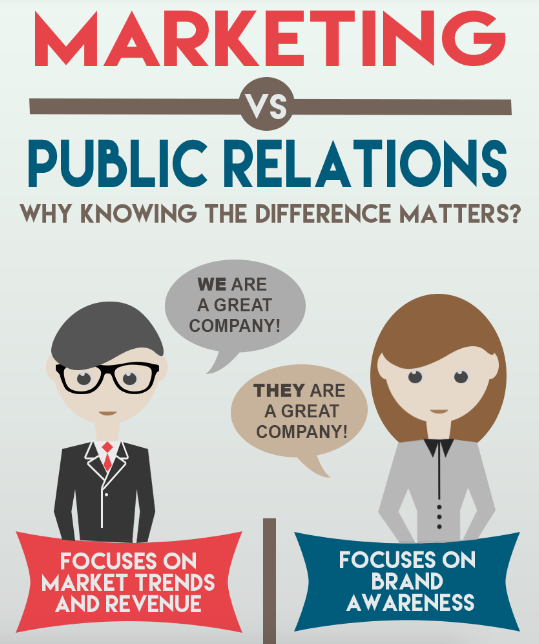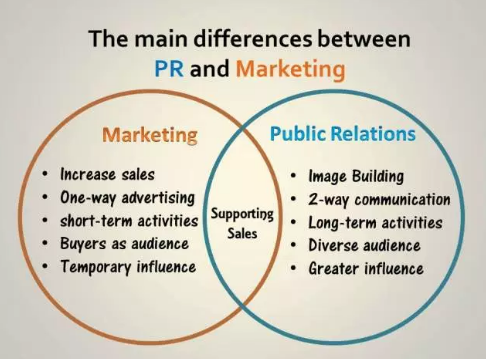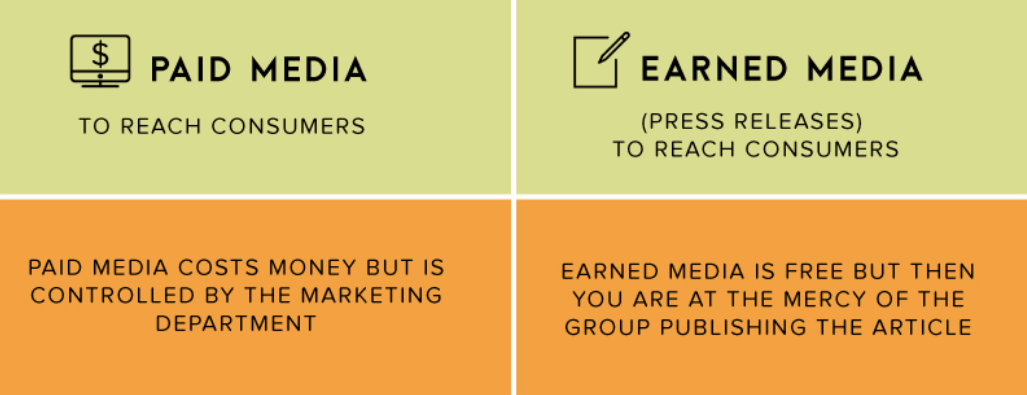How are you actively managing your company’s reputation today—both the parts you control and the parts you don’t?
If the answer isn’t crystal clear, it’s time to tighten your approach and put a repeatable strategy in place.
Some aspects of your brand’s reputation are in your hands—like how you publish content across your channels and how you use website elements to add credibility to your website.
Other signals—like a news story, a podcast mention, or a third-party review—are influenced by you but not fully controlled by you.
That’s where a proactive public relations strategy comes in.
Public relations (PR) introduces your business to new audiences and keeps existing audiences confident in your brand.
At its core, PR is how businesses communicate with people—customers, journalists, industry analysts, partners, and your local community.
There’s a common misconception that PR is only for damage control after a mistake. Many owners skip PR until there’s a crisis.
Yes, PR includes crisis communication—but the real value is steady, ongoing storytelling that earns trust before you ever need that playbook.
Think of PR as the system that guides what you share, where you share it, and how you respond when others talk about you. It’s part of branding, but focused on reputation, relationships, and communication—not just logos and taglines.
In the digital era, information spreads in minutes. Every business—new or established—needs a clear PR plan to keep pace and shape the narrative.
Even if you’re building a startup’s first marketing strategy, it isn’t complete without PR.
Below, you’ll learn PR fundamentals, how they differ from marketing, and how to use them to grow brand exposure the right way.
Differences between PR and marketing
First, separate your PR strategy from your marketing strategy so each can do its job well.
Don’t get us wrong: public relations and marketing overlap. But they optimize for different outcomes.

Marketing goals include actions like driving qualified traffic to your website, growing your email list, and converting visitors into customers.
PR ultimately supports revenue too, but it focuses on perception and trust: how people feel about your company, how often they hear about you, and whether third parties consider you credible.
PR’s impact on sales is often indirect. Think of it as the soil your marketing seeds grow in—strong reputation makes every campaign perform better.
Common reputation-building tactics include things like:
- Displaying customer testimonials that speak to outcomes and results.
- Encouraging reviews on trusted third-party sites to build social proof.
- Highlighting social proof such as case studies, awards, and media mentions.
Those examples often sit inside marketing assets, but the goal—credibility—belongs to PR.
To strengthen reputation through PR, focus on activities like press releases, speaking at industry events, contributing expert commentary, and nurturing relationships with journalists. These are indirect but powerful ways to elevate demand for your brand.
With marketing, you run promotions through your owned channels to trigger immediate action. With PR, you influence the conversation so those promotions land better. Different levers—same growth engine.
In short, effective PR supports sales by building the brand people want to buy from.

People don’t just buy products. They buy brands they trust.
That’s the core reason PR matters.
When a marketing campaign converts a customer, it’s usually because PR has already built familiarity and confidence in your company.
Understand the different types of media
PR work typically spans three media types:
- Owned media
- Paid media
- Earned media
Each contributes to reputation and discoverability in a different way. Use all three to move audiences from awareness to trust to action.
Here’s how they work and how to use them well.
Owned media
Owned media is any content you control end-to-end.
Although we’re discussing it within PR, it often lives alongside marketing.
Think blog posts, resource hubs, FAQs, your social content, landing pages, and website copy—including your “Newsroom” or “Press” page.
If you design and publish an infographic, a customer story, or a data report, that’s owned media.
You decide the angle, the accuracy, and the timing. You decide where it’s distributed.
Strong owned media amplifies every other PR effort. When someone hears about you elsewhere, what they find on your site should be helpful, credible, and conversion-ready.
Paid media
Paid media boosts visibility by placing your message in front of the right audience faster.
As the name implies, you pay to distribute content or secure placements.
Examples include social ads, sponsored content, and PPC campaigns.
Within a PR plan, you might also work with social influencers to increase your product credibility by having them create and share authentic experiences with your brand. Make sure any influencer posts clearly disclose material connections (free products, payments, commissions) and follow current FTC guidance on endorsements and testimonials.
Influencer marketing remains effective when it’s transparent, audience-aligned, and compliant. Since October 2024, the FTC’s Consumer Reviews & Testimonials Rule also bans buying or selling fake reviews and allows civil penalties for violations—so build paid and creator programs with disclosure and authenticity baked in.
Use paid placements to reach precise segments of your target market and to reinforce momentum from earned coverage.
This is far more targeted than hoping a general audience happens to catch a local news segment.
Earned media
Earned media comes from others talking about you—shaped by your actions, not purchased or fully controlled.
Your behavior, customer experiences, and product quality are in your control. Nail these and your earned media tends to be positive.
But the specific words, tone, and timing of what others publish are not in your control.
That’s the key difference between paid media and earned media.

Examples include third-party product reviews, podcast interviews, press coverage, analyst notes, and user-generated posts about your brand.
Customers raving about you on social media is earned media—and it compounds quickly.
Of course, earned media can also be negative.
If you stumble, you won’t feature it on your site—but news outlets or reviewers might. That coverage can shape perception fast.
If a news site runs a critical story, acknowledge issues, outline fixes, and demonstrate change. Silence lets others write the ending.
There’s an old saying:
“There’s no such thing as bad publicity.”
We don’t fully agree. Not all publicity helps. But a smart, consistent PR program can rebuild trust and grow positive exposure over time.
Inbound public relations
You likely know inbound marketing—attracting customers via helpful content, SEO, and social.
The same thinking powers inbound PR.
Inbound PR shifts the target from customers to media: journalists, editors, creators, and event organizers who amplify your story.
With inbound marketing you nurture buyers; with inbound PR you nurture publishers and storytellers.
Inbound public relations focuses on media outlets. Here’s a visual aid to explain the inbound PR methodology:

Many of the same channels apply—blogs, data studies, expert guides, social content—but the call to action is different: make it easy for media to cover you.
We’ve covered how to develop a customer persona that improves conversion rates. For PR, build a media persona: the beat they cover, formats they prefer, deadlines, and the kinds of stories they say yes to.
Then tailor your outreach based on that persona.
For example, as a local business, sponsoring a nearby high-school event is generous—and newsworthy.
You’ll want recognition, too, because it encourages more community support and participation.
Share the announcement on your site, and present it where local media will be present so details are easy to verify.
That increases the odds your story gets picked up and framed positively.
And just like you nurture repeat customers in marketing, you want repeat publishers in PR—outlets that return to you for credible stories, data, and quotes.
Make their job easy and they’ll keep coming back.
Measuring PR goals
PR’s impact isn’t always a direct sales spike, but you can still measure whether it’s working.
Start by tracking brand mentions and sentiment across the web and social.
A brand mention is any time someone references your business online—a classic form of earned media.
Not every mention includes a link back to your site. When positive mentions lack links, consider (politely) requesting one—it helps users and search engines connect the dots.
Consider using a tool such as Mention to monitor mentions, sentiment, and trends over time. There are many alternatives at different price points, so pick the one that fits your needs and compliance standards.
Beyond monitoring, tools like this can also surface potential influencers and journalists who already engage with topics you cover.
They’re useful for agencies and in-house teams alike, so you can manage PR without outsourcing if you prefer.
Remember: not every mention is flattering.
Review what people are saying, separate constructive feedback from noise, and respond thoughtfully where it makes sense.
When relevant sites talk about your brand, follow up and build relationships—these can lead to future features and consistent backlinks.
Quality backlinks and referral traffic from earned media can lift organic rankings and discovery over time.
Also measure website traffic sources, branded search demand, engagement on PR-driven pages (like your press room and case studies), and the number of new customers influenced by PR touchpoints. If you collect reviews or testimonials, make sure your processes comply with the FTC’s current Endorsement Guides and the 2024 rule against fake reviews (for example, no buying/selling reviews or undisclosed incentives).
Together, these metrics show whether your PR strategy is gaining momentum or needs refining.
Responsibilities of a PR manager
If you plan to hire or appoint someone to own PR, make sure you understand what the role requires day to day.
Great PR managers are exceptional communicators. At times, they’ll be the voice and face of your company.
They often speak at events, webinars, and media briefings—and they must stay calm and factual under pressure.
They also need strong writing skills to craft accurate, compelling press materials and company announcements.
It’s a plus if they can contribute to thought-leadership content on your blog and site.
Look for creativity and rigorous research skills—PR is part storytelling, part data gathering.
They should be comfortable with monitoring tools, media lists, interview prep, and turning feedback (good or bad) into clear action items.
Many companies say it’s difficult to find new employees with the mix of strategic and tactical skills needed to protect and grow a brand’s reputation.
Even advanced degrees don’t replace hands-on experience with media and messaging.
Most leaders agree PR is as critical as other communications functions—and it should be staffed accordingly.
Whether you take on the job yourself, hire, or delegate, here are core responsibilities a PR manager typically owns:
- Writing press releases that are factual, quotable, and easy for editors to use.
- Creating fact sheets and media kits that centralize bios, logos, product details, and stats.
- Sending tailored pitches and content to relevant media—not mass blasts.
- Providing media training for internal spokespeople, including message maps and Q&A prep.
- Meeting with agencies and partners to coordinate announcements, launches, and events.
- Analyzing media coverage and audience data to shape owned, paid, and earned campaigns.
- Attending industry events to network, gather insights, and secure speaking opportunities.
- Representing the business at job fairs and trade shows to attract talent and drive awareness.
Choose carefully—PR compounds over time, for better or worse, based on who’s steering it.
Conclusion
A well-run public relations strategy expands your reach and strengthens trust—so marketing works harder and customers stick around longer.
PR and marketing are partners with different priorities. Know the difference so you can plan both intentionally.
Use the trio of owned, paid, and earned media to shape perception. Lean on inbound PR to make your brand easy to cover. Track brand mentions, sentiment, backlinks, referral traffic, and branded search to gauge progress.
Put a clear owner in charge—internal or external—and define responsibilities so nothing falls through the cracks.
If you’re new to PR, start here: publish helpful owned content, build a small list of relevant media contacts, offer real stories and data, and respond quickly when people talk about you. That’s how you steadily build brand exposure.
